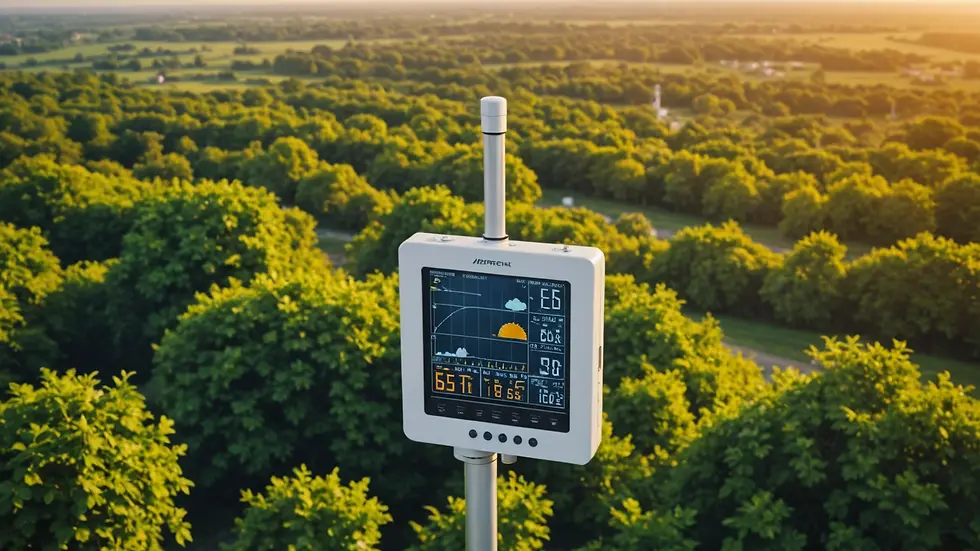What is Hyperlocal Weather and Why It Matters
- Joshua Bailey

- Apr 22
- 4 min read
As the world becomes increasingly connected, the need for precise weather information has never been more vital. Hyperlocal weather offers a solution to this growing demand by providing highly specific forecasts tailored to small geographic areas. This blog post explores what hyperlocal weather is, why it matters, and how it can affect our daily lives.
The Importance of Hyperlocal Weather
Weather can vary dramatically in small regions, even within a few miles. Traditional weather forecasts often provide generalized information that may not accurately reflect conditions in your immediate area. Hyperlocal weather addresses this limitation by focusing on localized data. This provides individuals and businesses with real-time updates that are more relevant to their specific needs.
For instance, a rainstorm may affect one neighborhood while leaving another completely dry. By having access to hyperlocal weather forecasts, residents can prepare more effectively, ensuring they carry umbrellas or avoid outdoor plans during questionable weather.

What is Hyperlocal Weather?
Hyperlocal weather refers to weather forecasting that is specific to a small geographical area, such as a single neighborhood, street, or even individual building. This level of detail is achieved through sophisticated technology that integrates localized weather data, often collected from ground-based sensors, satellite imagery, and advanced meteorological algorithms.
Characteristics of Hyperlocal Weather
Localized Forecasts: Unlike standard forecasts, hyperlocal predictions consider immediate surroundings and microclimates. For example, if one area is experiencing fog due to proximity to a lake, hyperlocal analytics can communicate this detailed condition to nearby residents.
Real-Time Updates: Hyperlocal weather services often deliver instantaneous alerts for sudden changes, such as thunderstorms, tornadoes, or snowfall. These alerts can help people act quickly without being caught off-guard.
Integration with Smart Technologies: Devices like smart home systems and mobile applications often integrate hyperlocal data. As a result, people receive tailored weather information that can help them manage tasks and activities effectively.

How Hyperlocal Weather Impacts Daily Lives
Agriculture
Farmers benefit greatly from hyperlocal weather forecasts. With precision in monitoring soil moisture, temperature, and rainfall patterns, farmers can make informed decisions about irrigation, planting, and pest management. A 2021 study suggested that precision agriculture utilizing localized weather forecasts can increase crop yields by 15-20 percent.
Emergency Management
In emergency situations, access to hyperlocal weather is crucial. When severe weather threatens an area, real-time data can guide decisions about evacuations or resource allocations. For example, during the 2020 hurricane season, localized forecasts helped emergency services respond effectively in areas most likely to be impacted, minimizing loss of life and property.
Urban Planning
City planners can use hyperlocal weather data to design infrastructure that withstands unique climate challenges. For instance, areas more prone to flooding can be better equipped with drainage systems and barriers. By understanding historical data relative to specific locations, urban planners can anticipate and mitigate issues before they arise.
Applications of Hyperlocal Weather Technology
Mobile Applications
Several mobile apps provide hyperlocal weather information. Apps like Weather Underground and Dark Sky allow users to access minute-by-minute forecasts tailored to their exact location, thus enhancing the overall decision-making process.
Smart Homes
Many smart home technologies are now integrating hyperlocal weather data. For example, smart irrigation systems can automatically adjust watering schedules based on real-time weather data, conserving water and promoting healthier lawns and gardens.
Community-Based Systems
Community-driven weather stations offer a grassroots approach to localized forecasting. These stations collect data from various locations and provide citizens unique insights into their local weather conditions. For instance, a neighborhood association might use data from these stations to plan public events around favorable weather.
The Future of Hyperlocal Weather
The landscape of hyperlocal weather is evolving rapidly. As technology continues to advance, more personalized weather forecasts will emerge, reshaping how we interact with weather information. Individuals can expect even greater accuracy, customized alerts, and improved integration with other technologies.
Furthermore, the importance of monitoring and anticipating hyperlocal extreme weather events cannot be overstated. As climate change continues to create increasingly unpredictable weather patterns, hyperlocal data will play an essential role in keeping communities safe and informed.
Steps to Stay Informed
Choose the Right App: Select a hyperlocal weather app that suits your needs and provides accurate data for your specific area.
Set Up Alerts: Enable notifications so you receive real-time updates about changing weather conditions.
Engage with Local Community: Participate in local weather stations or networks to gather and share firsthand experiences and forecasts.

Localized Forecasting: The Way Forward
In a world increasingly affected by climate variability and extreme weather events, hyperlocal forecasting serves as a beacon of hope. By unlocking the potential of tailored weather data, we can maximize safety, enhance productivity, and improve quality of life.
In summary, hyperlocal weather is more than just a trend; it's a transformative approach to understanding our environment. By becoming more attuned to the intricacies of localized weather, we can make smarter decisions for ourselves and our communities, ultimately leading to a more resilient and informed society.
For more in-depth insight on hyperlocal extreme weather, consider visiting hyperlocal extreme weather.
By using hyperlocal weather forecasts, we empower ourselves with the ability to navigate changes in our daily surroundings, making informed decisions based on the weather right outside our door.




Comments